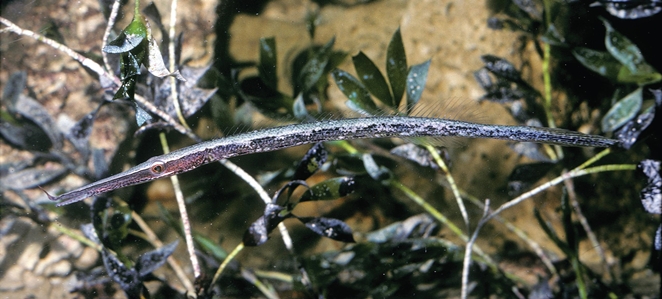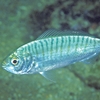General Description
Body extremely long and slender with a long, slender tail base; snout very long with a fleshy filament on the upper lip; pelvic fins absent; teeth fused into a beak. Greenish above, whitish to reddish brown below, with a dark brown stripe from the snout tip to the tip of tail and silvery stripe immediately below, tail yellowish-green. To 50 cm.
Biology
This bizarre-looking fish is occasionally taken as bycatch in commercial nets.
Habitat
Coastal areas with seagrass beds and brown macroalgae, in depths of 1-40 m.
Reefs
Seagrass meadows
Distribution guide
Southern Australia, including western and central Victoria.
Species Group
Fishes › Wrasses, rock whitings and allies
Depth
Shallow (1-30 m)
Deep ( > 30 m)
Water Column
Max Size
50 cm
Commercial Species
No
Global Dispersal
Native to Australia
Conservation Status
- DSE Advisory List : Not listed
- EPBC Act 1999 : Not listed
- IUCN Red List : Least Concern





